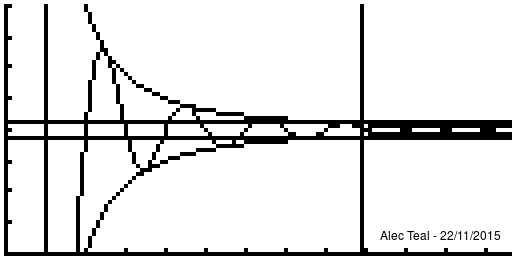Limit (sequence)
From Maths
- Note: see Limit page for other kinds of limits
Contents
[hide]Definition
Given a sequence (xn)∞n=1⊆X, a metric space (X,d) (that is complete) and a point x∈X, the sequence (xn) is said to[1][Note 1]:
- have limit x or converge to x
When:
- ∀ϵ>0∃N∈N∀n∈N[n>N⟹d(x,xn)<ϵ][Note 2]
- (note that ϵ∈R, obviously - as the co-domain of d is R)
- Read this as:
- for all ϵ greater than zero, there exists an N in the natural numbers such that for all n that are also natural we have that:
- whenever n is beyond N that xn is within ϵ of x
- for all ϵ greater than zero, there exists an N in the natural numbers such that for all n that are also natural we have that:
Equivalent definitions
- Note: where it is not obvious changes have a { underneath them
[Expand]
limn→∞(xn)=x⟺∀ϵ>0∃N∈N∀n∈N[n≥N⏟⟹d(xn,x)<ϵ]
Discussion
Requiring x∈X
If x∉X then d(xn,x) is undefined, as d:X×X→R≥0, that is the distance metric is only defined for things in X
Process
See also
Notes
- Jump up ↑ Actually Maurin gives:
- ∀ϵ>0∃N∈N∀n[n≥N⟹d(xn,x)<ϵ] (the change is the ≥ sign between the n and N) but as we shall see this doesn't matter
- Jump up ↑ In Krzysztof Maurin's notation this can be written as:
- ⋀ϵ>0⋁N∈N⋀n>Nd(xn,x)<ϵ
References
- Jump up ↑ Krzysztof Maurin - Analysis - Part 1: Elements
